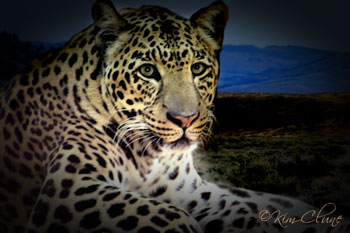Update 5/30/14:
The Rosemont Copper Mine may not be built – FWS withdrew its earlier approval after the Army Corps of Engineers found the company’s plan doesn’t comply with a Clean Water Act permit – it doesn’t protect water supplies, wildlife habitat, natural springs and wetlands.
—
Thanks to a series of lawsuits, the US Fish & Wildlife Service announced designation of 764,000 acres to protect endangered jaguars in the US.
Almost 1,200 square miles of critical habitat along the US-Mexico border in Arizona and New Mexico will help the jaguar population rebound from a handful today.
"While we’re disappointed that the protection omits the best US habitat for jaguars – the rugged Gila headwaters in New Mexico and the pine-clad Mogollon Rim in Arizona – this decision is a milestone that protects much of the borderlands that the first generation of returning jaguars is exploring and inhabiting," says Michael Robinson of the Center for Biological Diversity.
Since jaguars mostly live in Central and South America and these protected areas are the northernmost part of its range, what happens with that wall along the border that keeps out Mexican immigrants? Won’t it also hem in jaguars and other animals that travel back and forth?

In making the announcement, the Fish & Wildlife Service said, "This designation fulfills our obligations under a settlement agreement."
That’s right, they didn’t do it willingly. They were taken to court multiple times by the Center for Biological Diversity.
The jaguar has been on the Endangered Species List since 1997 and is just now receiving protection. One of the bigger problems of the Endangered Species Act is it can take decades before a species actually receives protection and some end up extinct before it happens. Just one jaguar has been recently sited in the southern US.
"Five years ago, a federal court rejected the Fish & Wildlife Service’s absurd argument that jaguars are too rare in the US to merit habitat protection. The decision came almost 17 years after FWS first protected jaguars under the Endangered Species Act in response to another court case brought by the Center," says Center for Biological Diversity.
Even with the set-aside for jaguars, FWS is allowing Rosemont Copper to build a $1.23 billion copper mine that takes up 3500 acres in the center of the habitat, where the only jaguar has been sited. If the US Forest Service approves the mine, the Center for Biological Diversity will take them to court.
Jaguars, the third-largest cat after tigers and lions, evolved in North America before colonizing jungle habitats of Central and South America. Their range stretched from southern California to the Texas panhandle, and to forests in Louisiana, Kentucky and North Carolina.
Jaguars disappeared in the US due to forest clearing, wetlands draining and killing to protect livestock.
Wolves
Meanwhile, the wolf-killing in Idaho continues, with Idaho Fish & Game getting help from the US Fish & Wildlife Service.
Sharpshooters in helicopters gunned down 23 gray wolves in Idaho’s Clearwater National Forest, and the state is set to approve $2 million to kill 500 more innocent animals.
"The state agency says the killing is necessary to boost elk harvest levels [for hunters] despite independent scientific research that habitat changes, not predators, have been the major factor in this localized elk herd decline," says Defenders of Wildlife.
The only good news for gray wolves is that Oregon and Washington States’s tiny wolf population is growing, currently at around 65 and 52 animals respectively. Instead of rushing to exterminate them as they do in Wyoming, Montana, Idaho and the Great Lakes, most Oregonians are celebrating the return of these iconic, important predators.
Wolves are dispersing farther westward and now live in the
Umatilla National Forest and are under "neighborhood watch" by the Confederated Tribes of the Umatilla Indian Reservation.
Where wolves are in Oregon:

North Carolina is the last stand for red wolves, where 100 live in the eastern part of the state. After successful re-introduction and breeding, they are threatened because they look exactly like coyotes. The state has authorized almost unlimited hunting for coyotes in red wolf habitat.
The US Fish and Wildlife Service wants protection removed for gray wolves in all the lower 48-states. In Alaska, they still hunt them by helicopter.
Read our article, Wolves In the Cross Hairs, Can’t They Be Allowed to Exist?
If you want to tell Idaho and the US Forest Service it’s time to end the brutality against wolves, comment here:

Please stop the ruthless killing of our wolves! Wolves are intelligent predators and are needed to keep prey animals in balance! They deserve a chance at life, too! Stop the wolf killing!